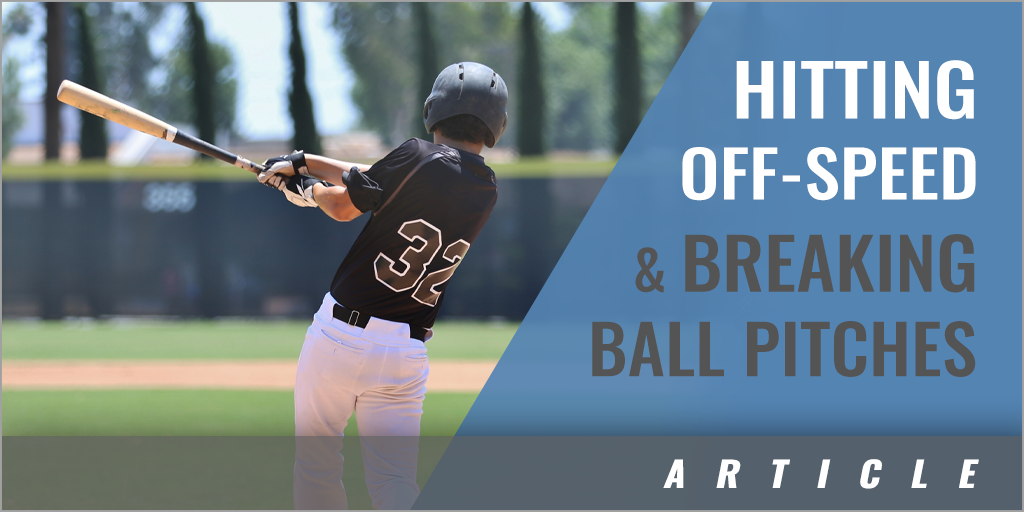|
By: Adam Sarancik Author of: Coaching Champions for Life "If you have not seen it often, you can't hit it often. Pitch recognition, and therefore good timing, is largely built from memory." Other than injury, the reason I hear given most often by players for why they do not move up to the next level in the game is, "I can't hit the change-up or breaking ball pitches." Here is the process for how to do it. The first step, as with anything in life, is to shift the player's thinking from negative to positive, i.e., "I can and I will hit those pitches!" Great hitters do not believe the old saying that the most difficult thing to do in sports is to hit a baseball. They have practiced often and well enough to believe they will do their job against any pitcher in any situation. Next, we must never forget that the best way for a hitter to get the job done is to get a good pitch to do the job. Swinging at the "pitcher's pitch" and not a pitch in the hitter's zone will likely lead to a bad result. Great pitchers have command of their pitches to throw them to look like strikes when, in fact, they are not. Off-speed pitches, by design or sometimes through lack of command, are frequently thrown in the dirt or off the plate. A player would not hit fastballs either if the ones he swung at were not in the strike zone. So why does this poor judgment about what pitch to swing at happen? Good judgment starts with the proper approach and discipline at the plate. The hitter must swing at strikes in their zone and sometimes must be patient to swing at only fastballs until they must do otherwise by sign or when the pitcher serves up a "cookie" of an off-speed pitch. The hitter must avoid, however, a habit of taking the first pitch simply to "see what the pitcher has." That first pitch may be, and frequently is, the best pitch the hitter will see because pitchers are taught the critical value of strike one. Most often, a hitter's deficiency to hit off-speed and breaking ball pitches is caused by a failure to recognize the type, speed and spin axis of the pitch. When not on the field, visual occlusion apps are a great tool to aid pitch recognition. During practice, many hitters only see fastballs and many times even those pitches are not at the speed they will see in the next game. In short, hitters need to regularly see all types of pitches in all zones at speeds and spin axes that they will see in games. This requires batting practice pitchers and/or machines throwing all types of pitches to all zones from the release point distance the hitter will see in the game so proper timing can be practiced. A great practice habit for hitters to assist them in pitch recognition is standing in during pitchers' bullpen sessions. If the pitcher's control is an issue, the hitter can stand behind a screen or wear their fielding glove to protect themself from a wild pitch. The hitter must simulate the intensity and process they would use if they were facing this pitcher in a game. All of the load, coil/internal rotation, stride and weight transfer mechanics must be done to practice proper timing and the hitter should call out the type of pitch they see and "swing/no swing" on every pitch. In fact, this lack of game process is probably the most common practice flaw I see at all levels of players. The only time many hitters use their game process is when they are facing a live pitcher. Otherwise, e.g., during tee and toss work, they do not begin by looking out at an imaginary pitcher and go through their normal hitting process. They also do not build into practice drills off-speed pitch designs. In short, batting practice is very predictable without enough randomization. The single biggest and most critical deficiency in hitting today is the failure to build "track time" into swing mechanics and drills. Almost all hitters at all levels today try to time their stride to the arrival of the pitch instead of striding out early enough to track all aspects of a pitch. This may work well for same-speed fastballs in a cage, but it will not lead to success against the many types of off-speed pitches elite pitchers can command. A hitter's stride must to be from balance-to-balance and needs to begin just after release point on all pitches - only the front heel getting down and the front leg stiffening are delayed until pitch recognition occurs and the swing begins. Simply put – stride then track, don't track then stride. One of the many effective drills I describe in my book is the Pitcher Tee Drill. A coach or player stands at the game release point distance behind a screen and pretends to pitch from the wind-up or stretch varying the arm slot and right-hand and left-hand deliveries. The hitter varies the timing of his swing by whether he sees the palm (fastball), pinky finger side (breaking ball) or pronated thumb side (change-up) side of the pitcher's hand. The hitter waits to swing an imaginary one-finger snap for a fastball, a snap and a half for a breaking ball and two finger snaps for a change-up, but the stride is made at the same time for all three pitches so the hitter is conditioned to have enough time to track any type of pitch. Try these tips and you will find that your players will successfully move up to the next level and, when they get there, they will hit for power and average!
Adam Sarancik is the author of three Amazon Top 100 Best Selling books:
|







